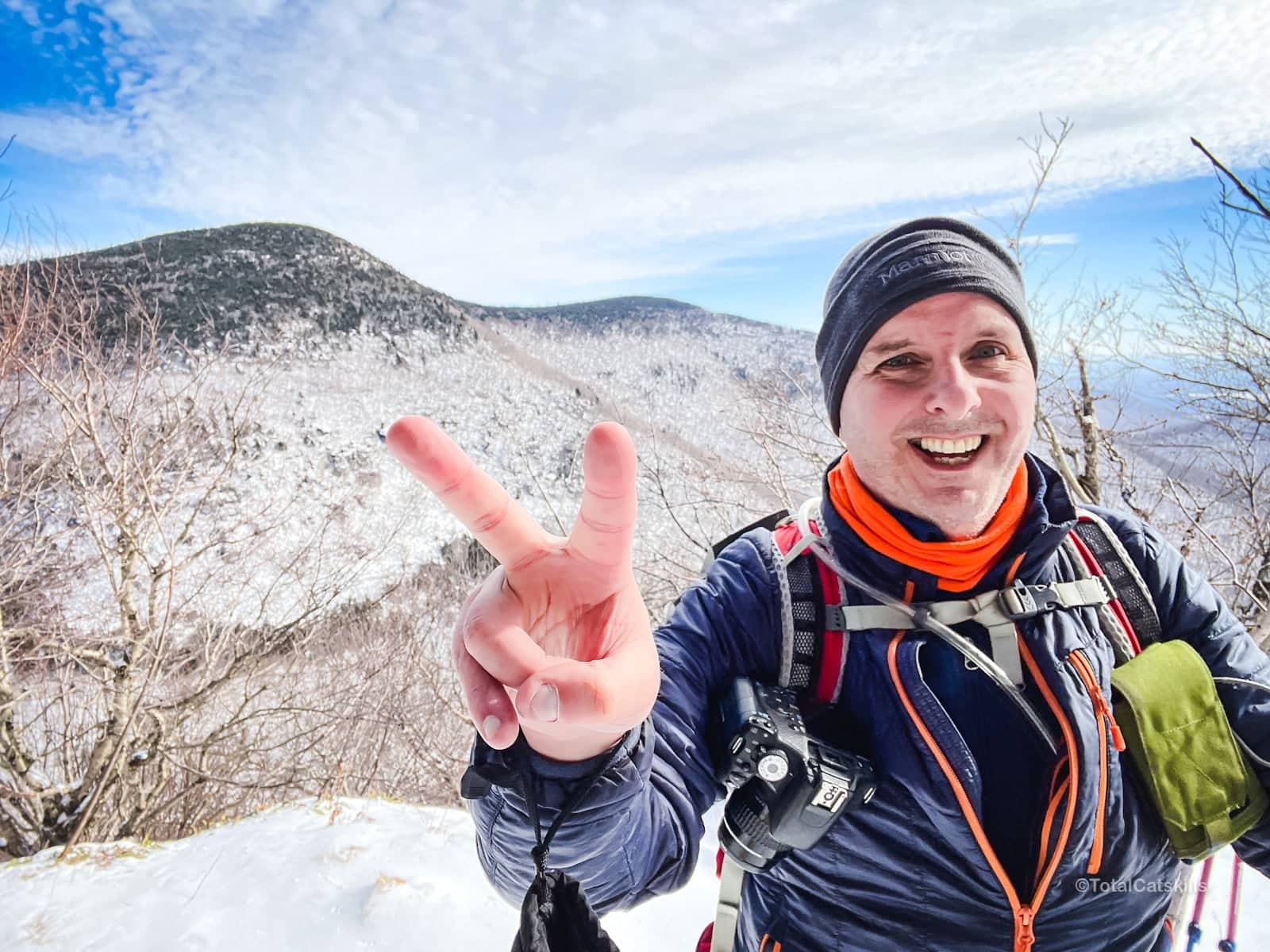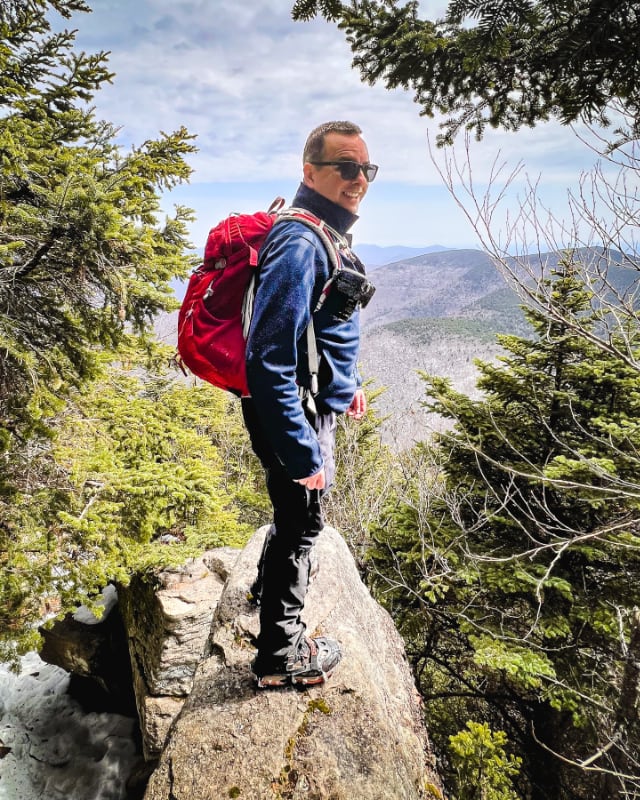Disclosure: This content may contain affiliate links. Read my disclosure policy.
Hate the coldest season? With a little extra gear and prep, and these winter hiking tips, you can stay warm and dry and get into the wilderness this winter for an incredible adventure.
Winter hikes are literally the best and so are these winter hiking safety tips. On a winter hike, you’ll see incredible things: true winter wonderland vistas; animal tracks, big and small; frozen glistening waterfalls; ice-cathedrals adorned with thirty foot icicles.
Winter hikes are also easier on your knees — difficult uneven rocky terrain is smoothed over with snow and ice.
And how about zero bugs? You can‘t do better than zero bugs.
Want a deep list of winter hiking benefits?
Hiking in cold weather is a mind-expanding challenge that will change the way you see the harshest, toughest, greatest season of them all.
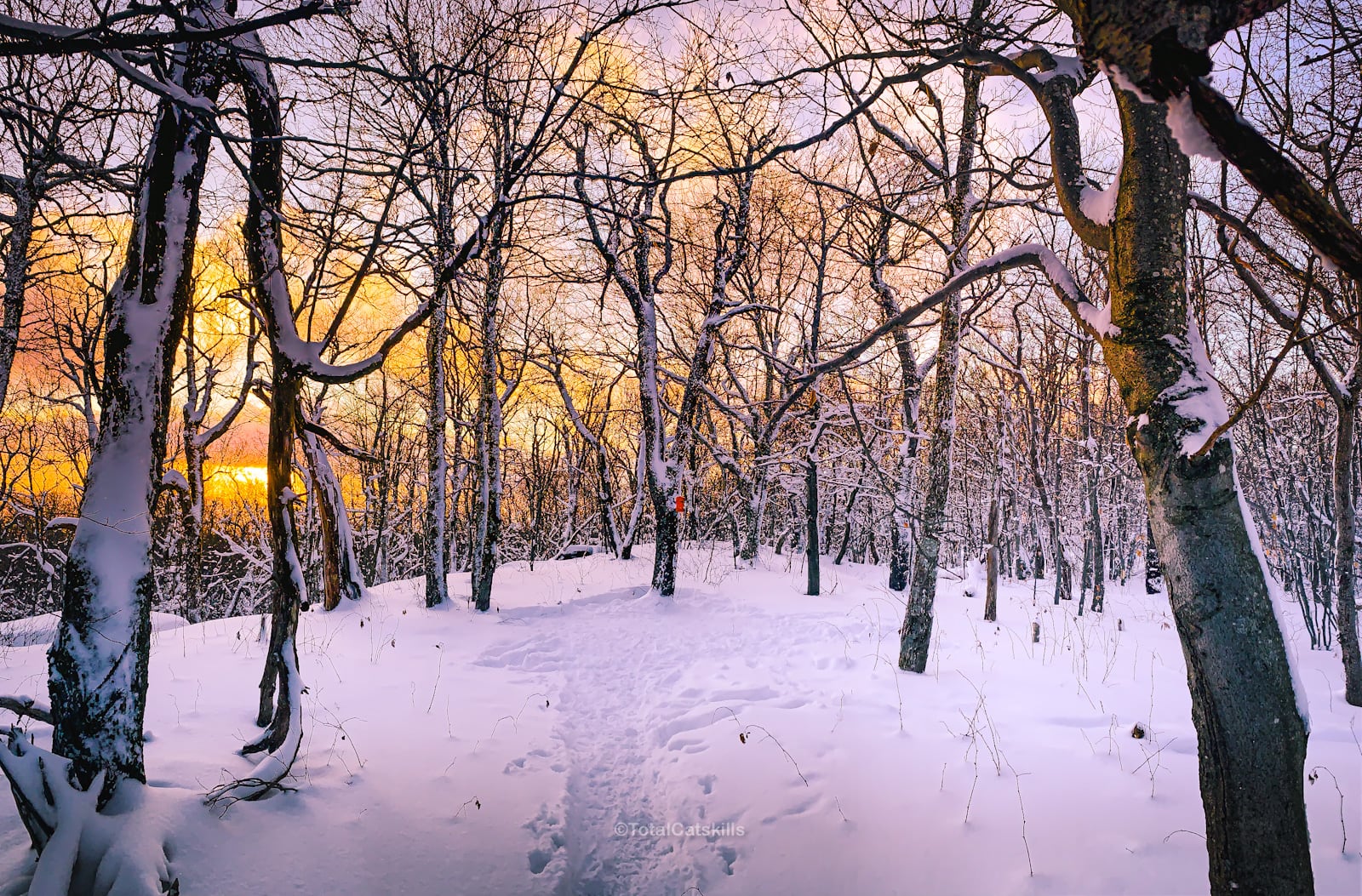
Your most important goal is always to return home safely.
You might also enjoy…
- Updated › Wittenberg & Cornell
- Updated › How to Winter Hike: The Essential Roundup
- Follow › Sean’s content on Instagram
- Identify › Bobcat/Coyote Tracks and Bear Prints
- Explore › Easy Hikes
- Hike More › Catskills, Adirondacks, Hudson Highlands, Gunks
Here are two dozen winter hiking tips for cold weather and deep winter hikes:
Tips for Hiking When it’s COLD
The first list of winter hiking tips and tricks covers hiking in moderate cold…
- Check forecasts multiple times. Check the summit forecast using a website like mountain-forecast.com and pay close attention to those wind chills. Check other sources too. Plan and pack for bait-and-switch weather events. The forecast may be for a clear, sunny day but then you’re two hours into your hike and you get hit with 40mph winds and a snowstorm rolls in. Mountain weather is unpredictable 365 days a year.
- Research the latest trail conditions. Check online sources like local Facebook hiking groups and recent AllTrails reports to get a sense of conditions on your intended route.
- Know what time sunset is at. Your phone will tell you. Your smartwatch will tell you. The internet will tell you. It’s a crucial piece of information in winter when daylight hours are so short.
- Tell someone your hike plan (route, timing, expected return time). It’s standard practice anyway, but so much more advisable on a winter hike with increased risks.
- Know your layers: base, mid, shell. Wear all three. Avoid cotton of any kind anywhere on or near your body. Stick to synthetics and smart wool.
- Wear more things. Hat, gloves and buff (a.k.a. neck gaiter). Plus spares in your backpack. Spare socks too!
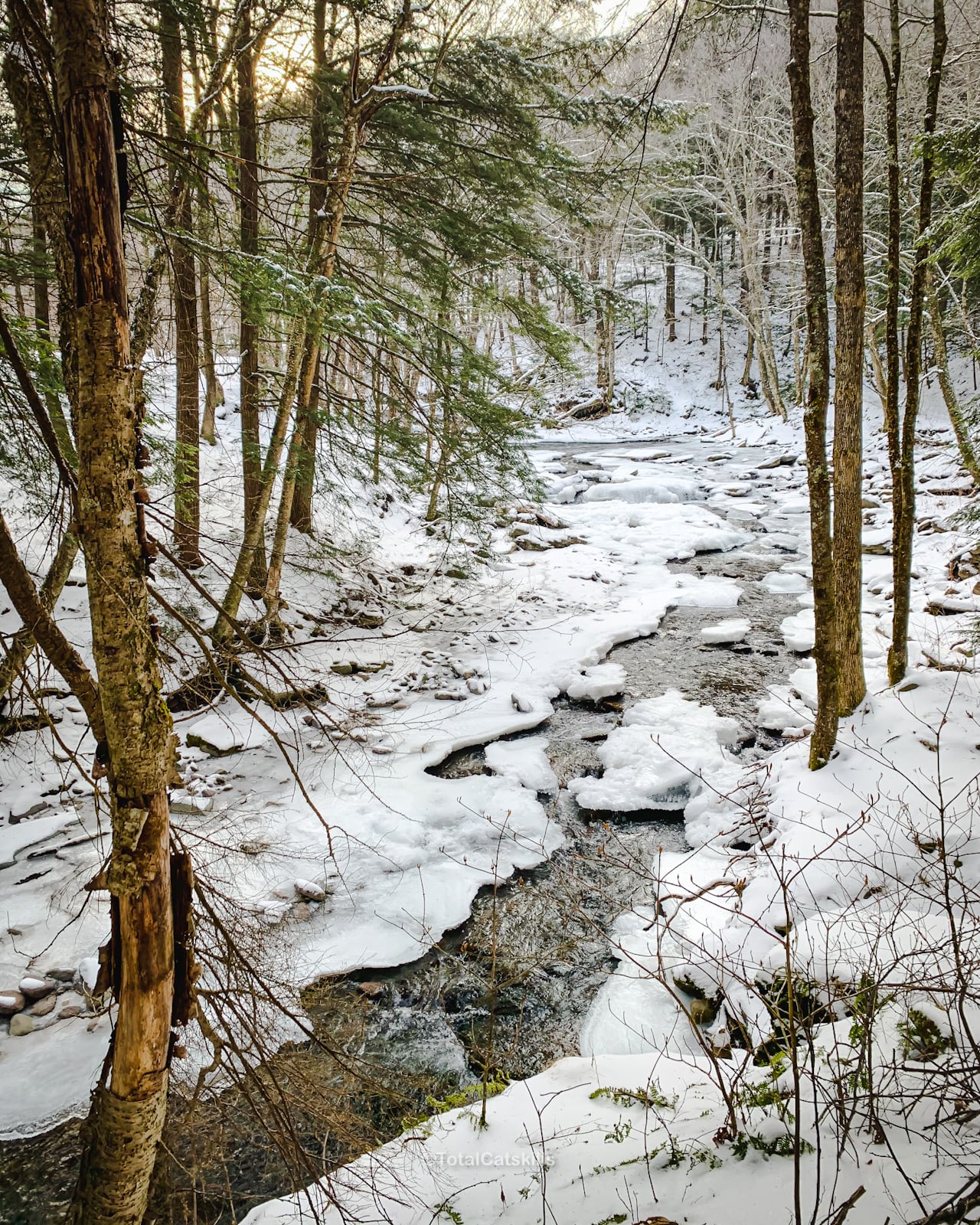
- Start cold, knowing you’ll warm up. Don’t overdress. Make sure your layers are breathable and not too tight. Experience will guide you but, initially, carry more layers than you wear. Otherwise, you’ll be stopping to de-layer in 15-20 minutes. Unzipping and re-zipping mid-layer and outer shells allows you to regulate your temperate as your effort levels increase and decrease.
- Hike short to gain experience. Until you get a feel for how you do in winter conditions, stick to shorter routes that don’t involve any technical issues like rock scrambles and sketchy climbs.
- Pack extra traction. Microspikes are the greatest invention. (Best brands: Hillsounds, Kahtoolas.) In the Catskills, I consider microspikes mandatory gear from mid-October to mid-May. Trekking poles will provide extra stability on ice and in deep snow. Switch to snowshoes when the snow is deeper than 8”.
- Don’t push hard. You never want to break a sweat on a winter hike. Moisture build-up on your body is the first step toward hypothermia. Slow down. It’s not a race. If necessary, take short rest breaks to cool off a little. Just stay dry.
- Eat and drink more. Winter hiking is harder on your body, so you’ll need extra fuel. Drink more often than you think you should.
- Pack The Ten Essentials. Obvious? Sure. But in winter The Ten Essentials are ten times as essential.
Read on to get even more tips for deep winter hiking.
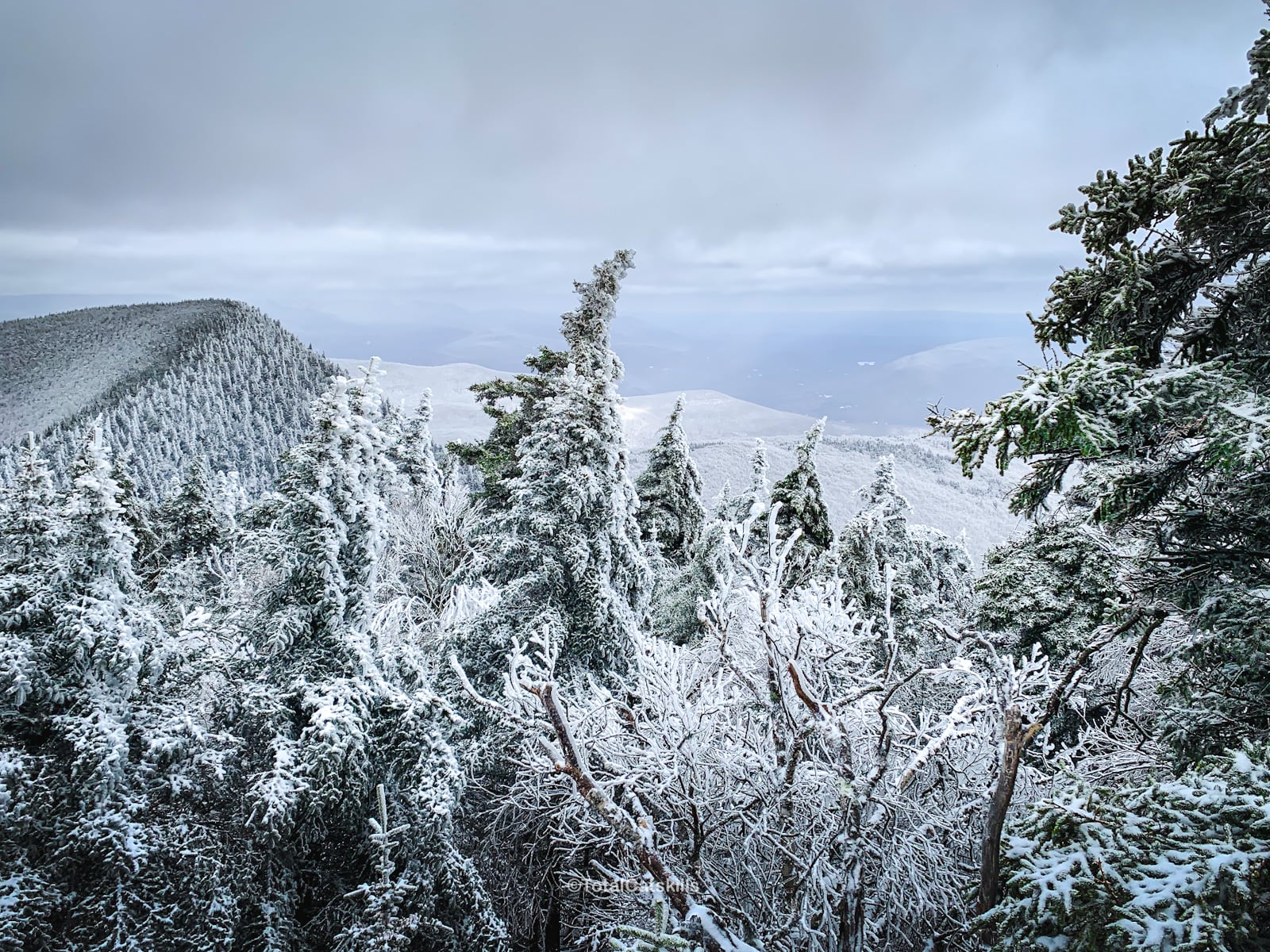
Tips for Hiking When it’s REALLY FKN COLD
This post is free to all readers thanks to my subscribers. Get full access to this website instantly and enjoy great supporter benefits!
The second list of winter hiking tips and tricks builds on the first. These are tips for intensely cold days when the temperature has dropped well below freezing…
- Stay safe by hiking with a partner. I solo a lot. All through winter, too. But on really cold days, I prefer to hike with a friend. Friends are great! Who doesn’t love a solid hiking buddy? Seeing amazing things with a friend? It’s the best! It’s also just the smart thing to do.
- Reconsider your route. There are a handful of trail sections of the Catskills I simply won’t do in the winter. This goes back to research, knowledge, experience, skill, and knowing your abilities and your personal tolerance for risk. Especially when solo, I limit my total distances and overall difficulty so as not to push my luck.
- Leave enough time. Hiking in ice and snow can be slow going. Allow at least 25% more time than your usual pace per mile. Start early. Plan to be back at your car at least an hour before dark.
- Buy the best gear you can afford. At first, I skimped. Then, I regretted. I can tell you first hand: don’t waste your money on cheap gear. Quality materials and build make a huge difference.
- Wear gaiters when snow is deeper than 6”. Winter gaiters keep the snow out of your ankles, which is a miserable experience. Bonus: they keep your legs a little warmer too.
- Pack chemical hand / toe warmers. Throw some in your pack, just in case. Even if you don’t need them, someone in your group, or a stranger with iced-up hands, will be so grateful
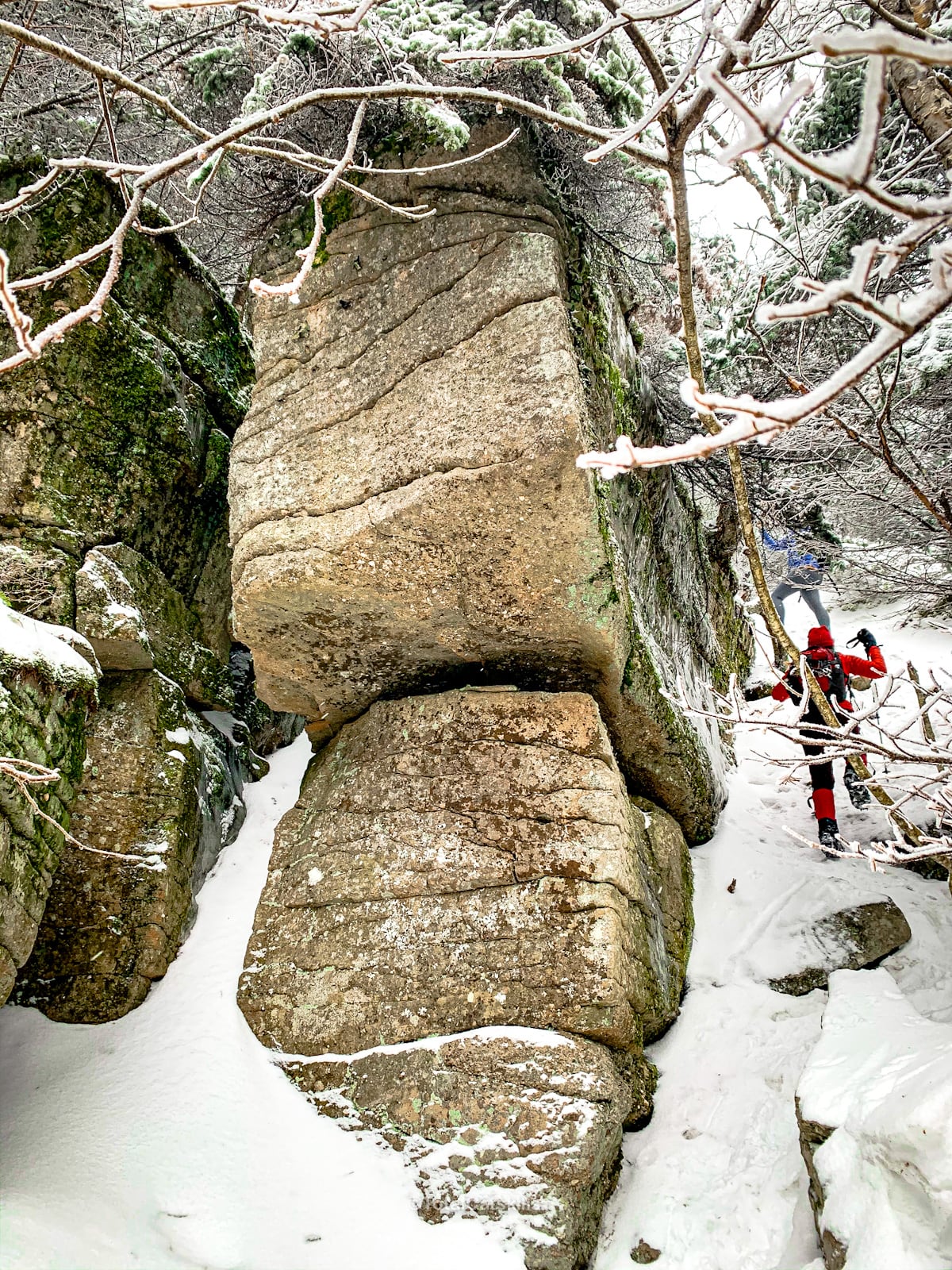
- Pack a foam hiking sit pad. Just so you can sit down for a minute without getting your tuckus moist. Yes, I said moist.
- Keep electronics on your body. Your phone might seem fine in the cold but, trust me, it’s not. Electronics are fine until, all of a sudden, they’re dead. Now your headlamp is dark. Now your phone is a brick. Carry all electronics tucked into your chest layers or a warm leg pocket.
- Keep spare batteries on your body. (Because you do carry spares, right?) Same deal here: a cold battery is a dead or dying battery. Keep ’em warm.
- Keep food on your body unless you enjoy eating it frozen. Ever had a pastrami sandwich give you an ice-cream headache? I have. (But even if you fuck up, it’s okay. You can warm your sandwich in your chest layers for 15-20 minutes and enjoy.)
- Switch to Reese’s Pieces. On the trail, I love mini-Snickerses but they quickly freeze hard in winter. Which, honestly, is fine; frozen caramel is fun to crack and melt in your mouth. But sometimes you just want a mushy chocolate treat. And Reese’s Pieces never seem to freeze.
- Know when to turn around. Turning around is the greatest hiking skill nobody talks about. There are so many reasons to turn around. But you don’t even need a reason. Just trust your gut and turn around.
- Treat yourself. After a tough-AF winter hike, make sure to reward your body with an amazing hot meal. It worked hard in crazy conditions. It’s good to love your body with a kick-ass dinner.
Two final tips for winter hiking…
Winter Hiking Tip No. 26: Keep Your Water Flowing
Here’s a bonus winter hiking tip if, like me, you prefer to keep using your backpack’s water reservoir when it’s below freezing. Always keep your feeder tube blown clear so it’s free of water. Any water in there will turn to ice in minutes, completely blocking your tube.
Blow until you hear bubbles behind your head, then seal the tube’s valve so water doesn’t seep back in.
Sometimes the mouthpiece freezes anyway, in which case you can thaw it out by holding in your hot hands, or by tucking it inside your chest layers.
It’s vital that you have access to hydration on a winter hike. If your water supply becomes inaccessible for any reason, please turn around.
Remember: your most important goal is always to return home safely.
Some people pack hot water in a Nalgene bottle stashed deep in their backpack, often in a thick wool sock to keep it insulated. Personally, I can’t think of anything more disturbing on a hike than drinking lukewarm water.
I prefer to bring hot tea / coffee / chocolate in a thermos as a back-up fluid, or just as a wonderful treat.
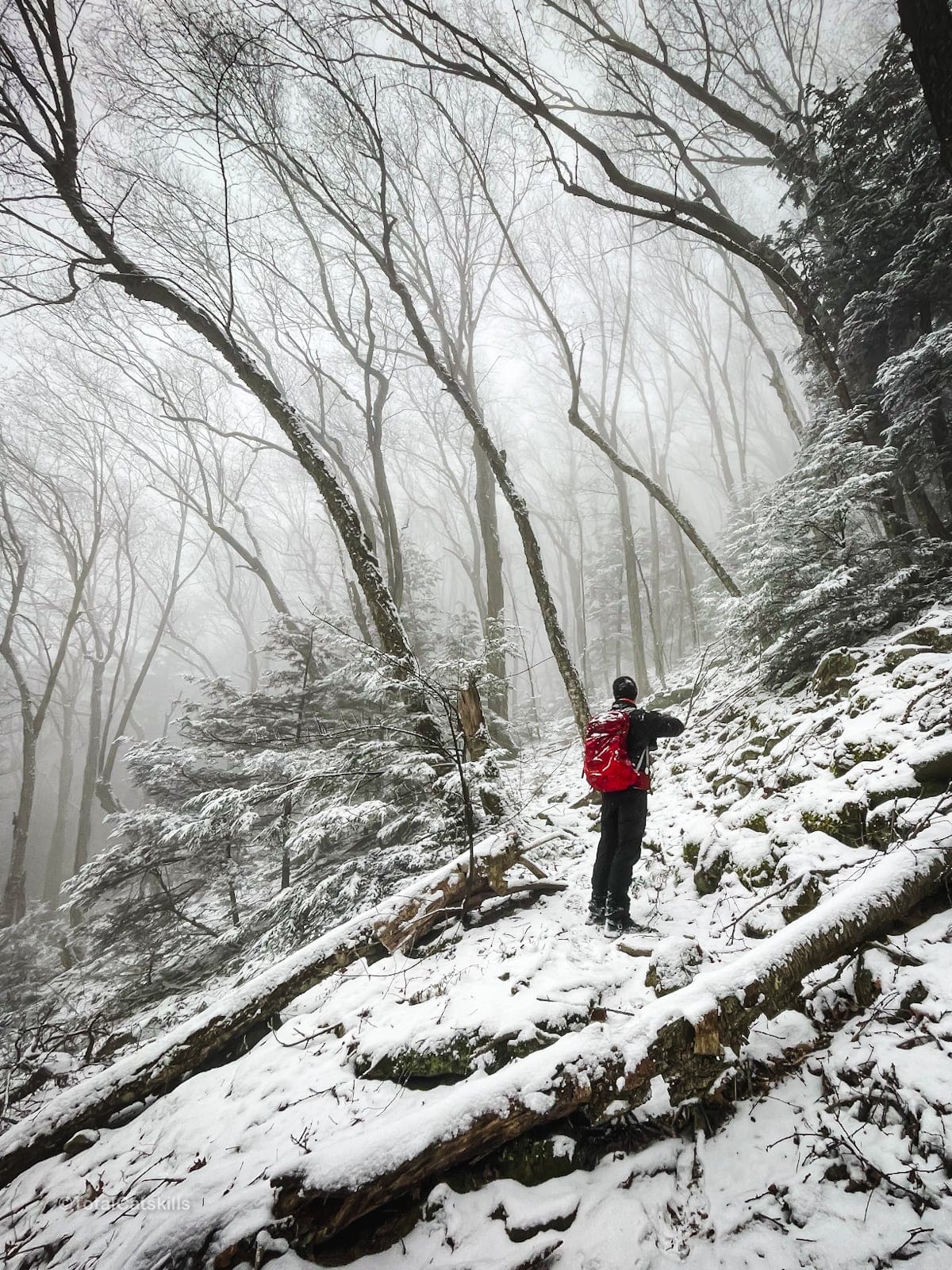
Winter Hiking Tip No. 27: Know Your Temperature Limits
Personally, my animal anatomy runs hot. At home, in the warm months, I sleep under a single thin sheet. Even in winter, I have as light a sleep system as I can get away with.
So, when I hike, it doesn’t take long before I’m fully warmed up and I have to start de-layering.
And even in frigid conditions, pretty soon into a hike I’m opening or fully unzipping my jacket. I take off my gloves and hat regularly, only putting them on again when I stop to rest.
However, even when I’m fully warmed up after hours of hiking, I’ve found that at 14°F (-10°C) I can only stop to rest for five minutes before the cold begins to penetrate my hands and core.
Once I get moving, it can take 10-15 minutes to warm back up. (But this feels very on-the-edge-of-my-limits.)
At -4°F (-20*C) I cannot stop hiking. At all. Even to rest. As soon as I stop moving, I swear I can feel winter begin to crush the life from my body. It’s always shocking to me how brutally cold New York winters can be.
Therefore, generally, I don’t solo hike below 14°F (-10°C).
As in all things, your mileage may vary.
I hope these winter hiking tips help you have an amazing time on a hike this winter.
Read More
Enjoyed these winter hiking tips? Read 12 Life-Changing Benefits of Winter Hiking.
Grab this free downloadable and printable Essential Winter Gear Checklist.
Read through the WINTER and WINTER GEAR pages on this website, and stay safe out there!
Get full access…
Get instant access to the full version of this site and enjoy great supporter benefits: full galleries, full trail notes, early access to the latest content, and more.
Hot on the website right now…
Follow for more…
Follow my @TotalCatskills content on Instagram for regular hiking inspo and safe, inclusive community.
